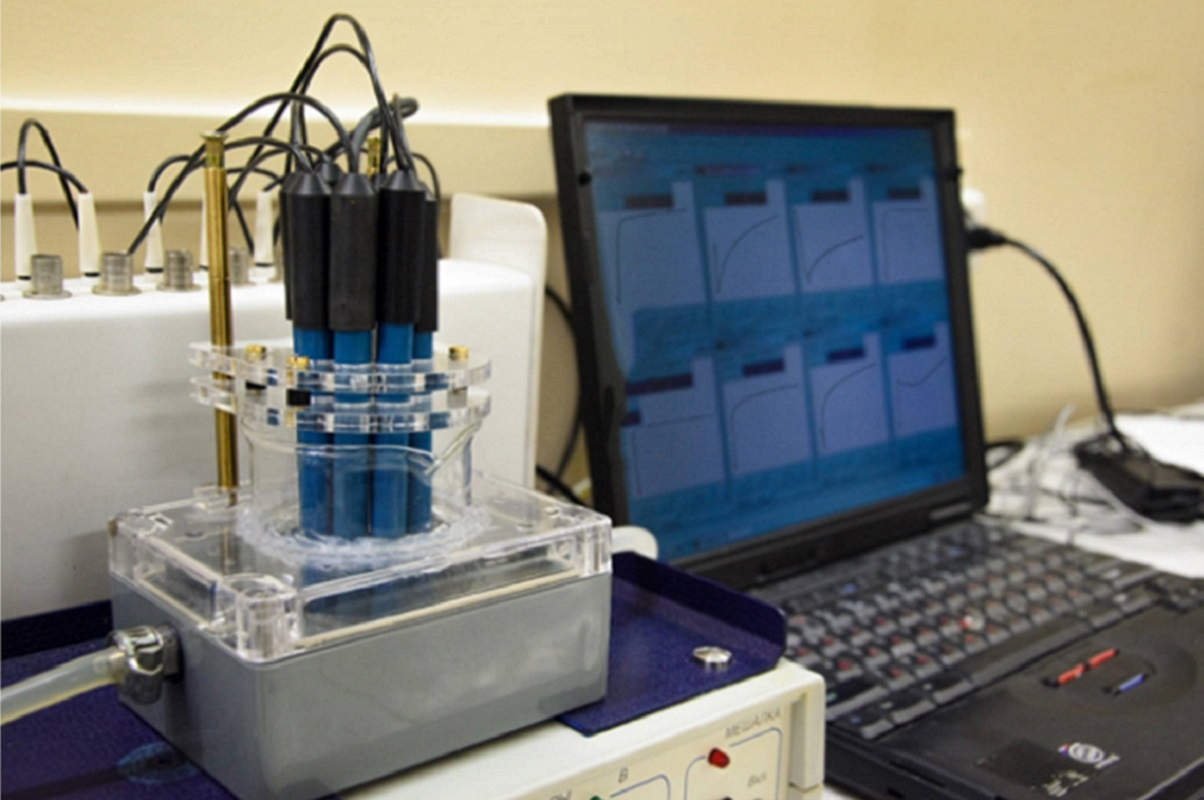St Petersburg University chemists develop a method for rapid screening of oncological diseases of the genitourinary system

St Petersburg University scientists have developed a non-invasive screening method to detect oncological diseases of the genitourinary system. It is expected to help in detection of prostate or bladder cancer at an early stage to start timely treatment.
Today, late diagnosis is among the main difficulties in the fight against oncological diseases of the genitourinary system. It significantly reduces the chances for successful treatment. In the early stages, the disease is almost invisible, and many people postpone the examination, said Dmitry Kirsanov, Professor in the Department of Analytical Chemistry at St Petersburg University, Head of the Laboratory of Applied Chemometrics at St Petersburg University.
St Petersburg University scientists developed a rapid screening method for detecting prostate and bladder cancer using a simple urine test.
We propose to employ the integral composition of urine for detecting these types of cancer in a patient. We analyse urine samples with a specially designed set of chemical sensors and process the results using machine learning methods. This chemometric approach is often used today in chemical research. We are creating a model in which the response of the sensors shows whether the patient has a disease.
Dmitry Kirsanov, Professor in the Department of Analytical Chemistry at St Petersburg University, Head of the Laboratory of Applied Chemometrics at St Petersburg University
The key advantages of the new method developed by the University researchers over traditional examination methods are non-invasiveness and rapidity. The results can be obtained painlessly without medical intervention using a simple urine test. This approach ensures a rapid screening of large population groups without having to use special expensive equipment. According to the experts at St Petersburg University, the screening equipment is compact and cost-effective.
‘This is one of the main advantages of our chemical sensors and multi-sensor systems. Unlike many analytical methods, our method is really simple. It will be easy to introduce them into mass production and offer them as screening methods,’ Dmitry Kirsanov added.
Today, among the options for early detection of prostate cancer is monitoring the level of prostate-specific antigen (PSA) in the blood. An increase in PSA may indicate the development of pathology. The analysis of 89 patient samples conducted by the scientists showed that the sensitivity of the rapid test is much higher. This means that the result is more accurate than the blood test for PSA.
The scientists achieved an accuracy of 97% for detecting prostate cancer and 76% for detecting bladder cancer.
‘Checking the results on a large set of samples will ensure that we obtain even more accurate results. This will also introduce this procedure as a screening method. By doing so, we can identify in advance people who can potentially have oncological diseases of the genitourinary system. If this screening is massive and regular, like an annual fluorography, doctors will have the opportunity to detect such serious diseases at an early stage and effectively treat them,’ Dmitry Kirsanov said.
Express screening is a more attractive and simpler analogue of the early diagnosis of serious diseases and does not require medical intervention. Following the screening results, the patient, if there are suspicions, can be advised an additional examination to search for specific diseases. Among them are magnetic resonance imaging, computer tomography, or a biopsy to confirm oncology.
According to Dmitry Kirsanov, this will help in preventing the development of cancer. More often than not, patients have a painful biopsy procedure when the disease has already developed.
The chemometric approach makes it possible to extract exactly the information that is necessary for recognising a specific disease in a complex response of an array of sensors. This requires a careful choice of mathematical algorithms and parameters and their comprehensive testing on real data.
‘To search for different diseases, you need to use different sensors. The data processing will be different. Yet there will be no difference for patients. Following the analysis of one urine sample, it will be possible to conduct several studies, if necessary. By analysing the chemical composition of urine, we will be able to detect different types of cancer,’ the expert said.
In future, the development of the scientists may make it possible to conduct an express test as part of a laboratory analysis of urine to determine in a timely manner whether the patient needs additional oncological examination.
The development of the multisensor system for non-invasive express screening of prostate cancer and bladder cancer has been carried out since 2019 by St Petersburg University, the ITMO University, the Urological Clinic of the Kirov Military Medical Academy, and Zhejiang University. The research results are published in Sensors and Actuators B: Chemical and Talanta. The research was supported by the grants from the Russian Foundation for Basic Research and the National Science Foundation of China as part of the programme of bilateral projects; the UMNIK programme of the Innovation Promotion Foundation; and the “5 in 100” project grant from the Government of the Russian Federation.

